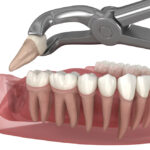In the world of dentistry, wisdom tooth removal has long been considered a rite of passage for many patients entering adulthood. But beyond the clinical necessity, it also represents a significant business opportunity for dental practices. As one of the most common oral surgeries performed worldwide, surgical extractions—particularly of impacted wisdom teeth—can play a pivotal role in the profitability and growth of a dental practice.
Understanding the Demand for Wisdom Tooth Removal
Wisdom teeth, or third molars, often need to be removed due to impaction, lack of space, or potential complications like infection and damage to adjacent teeth. This makes wisdom tooth removal a predictable and repeatable procedure, typically recommended between the ages of 17 and 25.
From a business perspective, this consistency in demand makes it an attractive service. Not only does it ensure a steady flow of patients, but it also opens the door to broader patient engagement—especially with younger demographics who may then continue their dental care within the same practice.
The Economics of Surgical Extractions
While general cleanings and check-ups are essential for patient retention and oral health maintenance, they don’t offer the same profit margins as surgical procedures. Wisdom tooth removal, particularly when done under sedation or with advanced surgical planning, can generate significantly higher revenue per appointment.
Many dental practices choose to refer out these cases to oral surgeons. However, with proper training, equipment, and staffing, general practitioners can keep these procedures in-house. This not only retains revenue but enhances the clinic’s value proposition. Patients often prefer the convenience and familiarity of their regular dentist, especially when undergoing procedures that can cause anxiety.
For multi-chair or group practices, offering wisdom tooth removal as a bundled service—alongside orthodontic consults or general dental exams—can be a strategic growth tactic. In high-demand seasons like school holidays, targeted campaigns can attract families and students needing pre-college dental care, further boosting clinic volume.
Advancements in Dental Technology Are Changing the Game
One of the most transformative shifts in the business of wisdom tooth removal has been the advancements in dental technology. Modern digital tools have made diagnosis, planning, and execution more precise, efficient, and patient-friendly.
Cone Beam CT (CBCT) scanners allow for 3D imaging, giving dentists a highly detailed view of the tooth’s position relative to nerves, sinuses, and adjacent structures. This significantly reduces surgical risk and enhances patient outcomes, translating into fewer complications, less chair time, and higher patient satisfaction.
Guided surgery software and 3D-printed surgical guides are becoming more accessible even to smaller practices. These tools increase accuracy in complex cases and reduce surgical time, allowing clinics to perform more procedures in a day without compromising quality.
Laser technology is also making strides in soft tissue management during wisdom tooth removal. It offers a less invasive approach, reduces bleeding and swelling, and accelerates healing—all of which contribute to better patient experiences and positive reviews.
Moreover, the integration of AI-powered case assessment tools is streamlining the diagnostic process. These tools can help flag impacted wisdom teeth from digital X-rays automatically, supporting early intervention and smarter scheduling.
Enhancing the Patient Journey
Patient experience is critical to long-term business success. Thanks to advancements in dental technology and better sedation options, the patient journey for wisdom tooth removal is vastly improved compared to even a decade ago.
Online booking, automated follow-ups, and digital pre-op education reduce administrative friction and improve compliance. Practices that implement these systems often see higher conversion rates from consultation to procedure.
Additionally, offering flexible payment plans or in-house financing for higher-cost surgical procedures helps make care more accessible. With younger patients (and often their parents) footing the bill, affordability is a key factor in acceptance of treatment plans.
Marketing & Positioning Your Practice
To fully capitalize on the business potential of wisdom tooth removal, dental practices must market their services effectively. Educational content—blogs, videos, and social media posts—can demystify the procedure and build trust.
For example, showcasing how your practice uses the latest advancements in dental technology can set you apart. A short Instagram reel showing your 3D scanner in action or a behind-the-scenes look at your sedation suite can be both informative and engaging.
Online reviews are another powerful tool. Encourage happy patients to share their experiences, particularly those who underwent wisdom tooth removal. Highlighting comfort, speed, and professionalism reinforces your clinic’s reputation as a trusted provider of oral surgery.
Wisdom tooth removal isn’t just a clinical necessity—it’s a strategic business opportunity. With the right training, technology, and patient-centric approach, dental practices can turn this common procedure into a high-value service line.
As advancements in dental technology continue to reshape what’s possible in oral surgery, staying ahead of the curve will be key to both exceptional patient care and wise profits. By investing in the right tools and team, practices can ensure they’re not only extracting teeth—but also unlocking long-term growth.





